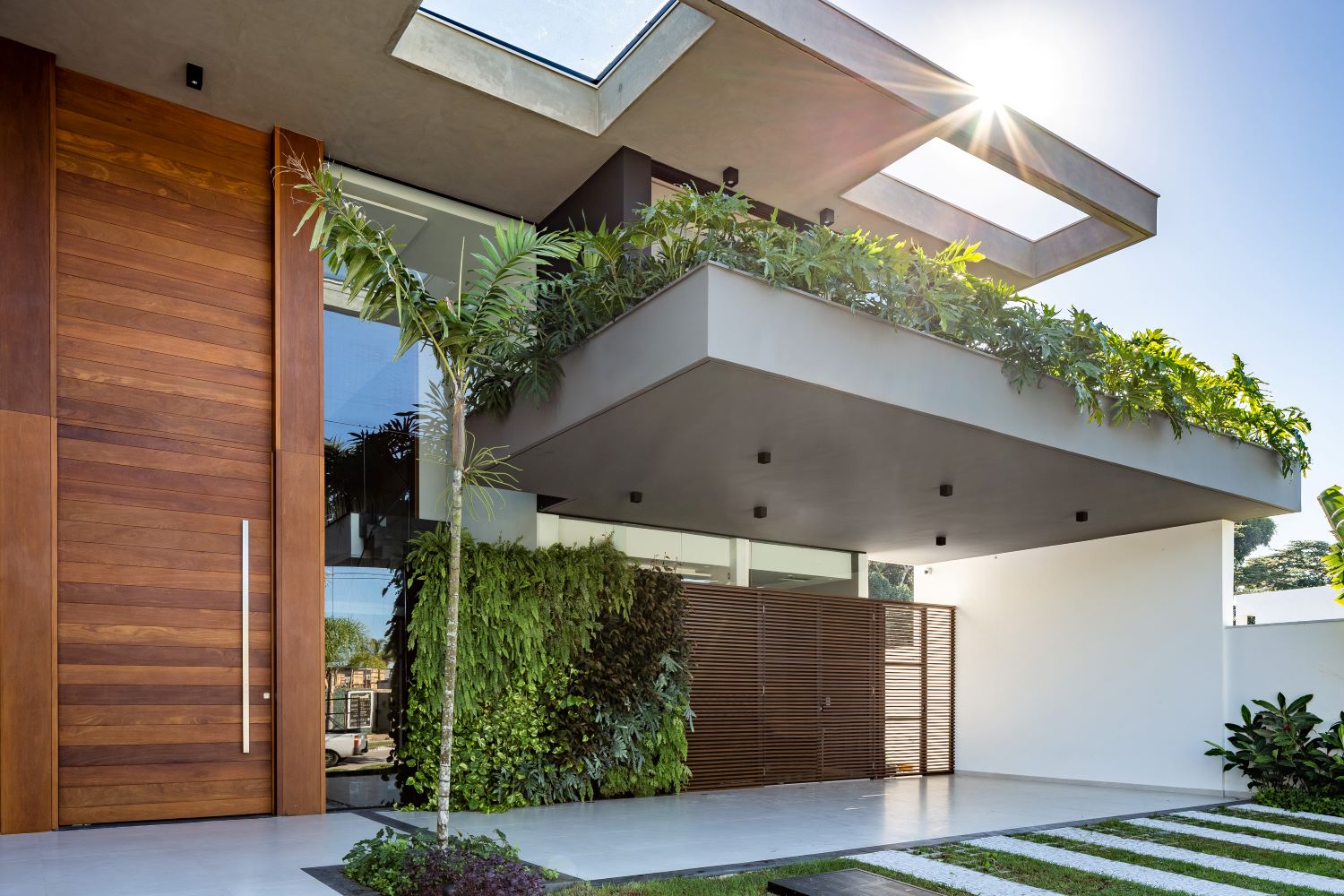#16906. Modern eco-friendly facade with integrated greenery and wooden elements

We are looking at an expressive example of modern biophilic architecture, where geometric rigor elegantly combines with natural softness. The building's facade demonstrates a harmonious interaction between natural materials and innovative structural solutions. The monolithic volume of the house is lightened by large glazing and an expressive cantilevered extension of the second floor, creating a dynamic composition.
Special attention should be paid to the wooden cladding of the entrance group — horizontal slats in a warm brown shade create a tactile contrast with the smooth white surfaces of the main volume. The massive wooden door with a vertical stainless steel handle emphasizes the building's status.
The most impressive element of the facade design is the abundant greenery integrated into the building's architecture. The vertical garden on the ground floor and the green edge along the perimeter of the upper tier not only visually soften the building's geometry but also perform an ecological function, improving the microclimate.
The composition is complemented by thoughtful lighting: upper skylights provide natural illumination to interior spaces, while sunlight reflected from glass surfaces creates an interplay of light and shadow. The minimalist restraint of the architectural solution is balanced by the richness of textures and shades of vegetation.
This approach to facade design can be adapted for smaller-scale private construction: using vertical landscaping, combining natural materials with modern finishing solutions, integrating panoramic glazing, and thoughtful zoning of external space can transform an ordinary house into an expressive architectural object.